Secure and Protect Your Products with High-Quality Stretch Films
Stretch Film Packaging
Discover our comprehensive range of stretch film packaging solutions. From versatile hand wraps to high-performance machine-grade films, our products ensure secure and efficient packaging, protecting your shipments during transportation and storage. Rely on our expertise and industry-leading products to optimize your packaging processes and provide reliable protection for your valuable products.
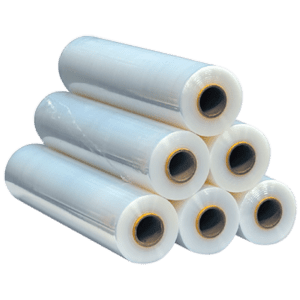
Secure and Protect Your Products With High-Quality Stretch Films
Stretch Film Packaging
Discover our comprehensive range of stretch film packaging solutions. From versatile hand wraps to high-performance machine-grade films, our products ensure secure and efficient packaging, protecting your shipments during transportation and storage.

What is Stretch Film?
Stretch film, also known as stretch wrap or pallet wrap, is a versatile plastic film used to secure and protect products during transportation, storage, or handling. It is typically made from materials like linear low-density polyethylene (LLDPE), which possesses excellent stretch and cling properties.
This flexible film is applied by hand or with automated machinery, tightly wrapping around items to create a secure and protective barrier. The stretchability of the film allows it to elongate and conform to the shape of the load, providing stability and preventing shifting or damage. Stretch film offers several advantages, including load containment, resistance to dust, moisture, and tampering, and improved visibility of packaged goods. It can be customized with various thicknesses, additives, and application methods to meet the specific packaging needs of different industries.
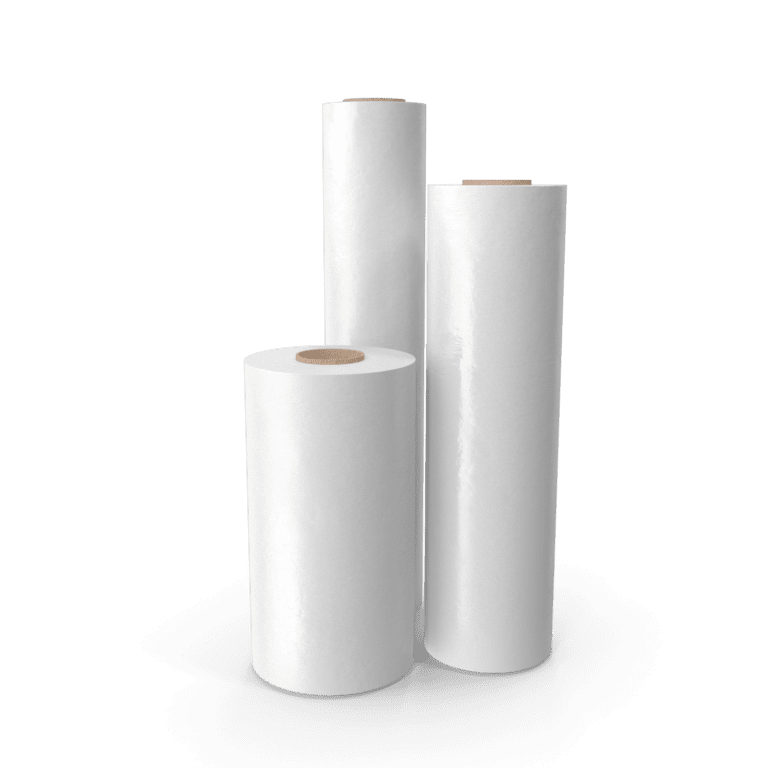
Our Stretch Film Products
Stretch film provides an efficient and cost effective solution for your packaging and unitization projects. Our stock selection has the complete line of cast and blown films in conventional and new generation high performance characteristics. Outstanding tear resistance, excellent cling and great stretch-ability are among several great characteristics our stretch film line provides.
Select The Right Stretch Film
When selecting the right stretch film, important considerations include load stability, film thickness, compatibility with packaging machinery, and cost-effectiveness. These factors help in making an informed decision that meets specific packaging needs.
-
Cast and Blown Film
Manufacturing Process -
Conventional, Engineered & Pre-stretched
Film Types -
Hand and Machine
Application Methods
Stretch Film Manufacturing Processes
The manufacturing process directly impacts the film’s properties and determines its suitability for various packaging needs.
Cast Film
Cast stretch film is manufactured by extruding molten resin through a flat die, resulting in excellent clarity and a smooth appearance.
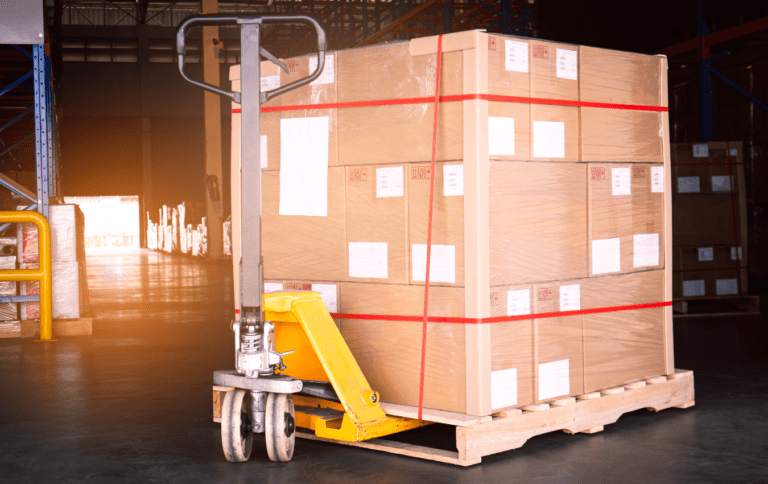
- Excellent clarity: Cast stretch film offers exceptional transparency, allowing for easy identification and visibility of packaged products.
- Smooth and glossy appearance: The film has a polished surface, enhancing its aesthetic appeal.
- Quiet unwind: Cast stretch film unwinds quietly during application, minimizing noise in the packaging process.
- Good load-holding capability: It securely wraps and holds loads together, providing stability and reducing the risk of shifting or damage.
- Palletizing and unitizing: Cast stretch film is commonly used for wrapping pallets, securing boxes, and bundling goods together for transportation and storage.
- Shipping and distribution: It is suitable for protecting goods during shipping, preventing dust, moisture, and tampering.
- Retail and display: Cast stretch film’s clarity and smooth appearance make it ideal for retail applications where product visibility is essential.
- General packaging: It can be utilized in various industries for wrapping and protecting goods in warehouses, manufacturing facilities, and distribution centers.
- Cost-effective: Cast stretch film is generally more affordable compared to other types of stretch films.
- Versatility: It can be used with both manual and automatic packaging equipment, providing flexibility in different operational setups.
- Improved efficiency: The quiet unwind and consistent film thickness contribute to a smoother and faster packaging process.
- Reduced product damage: The excellent load-holding capability of cast stretch film helps prevent shifting, ensuring products arrive in optimal condition.
Blown Film
Blown stretch film is created by extruding resin through an annular die, producing a tougher film with enhanced puncture resistance and cling.
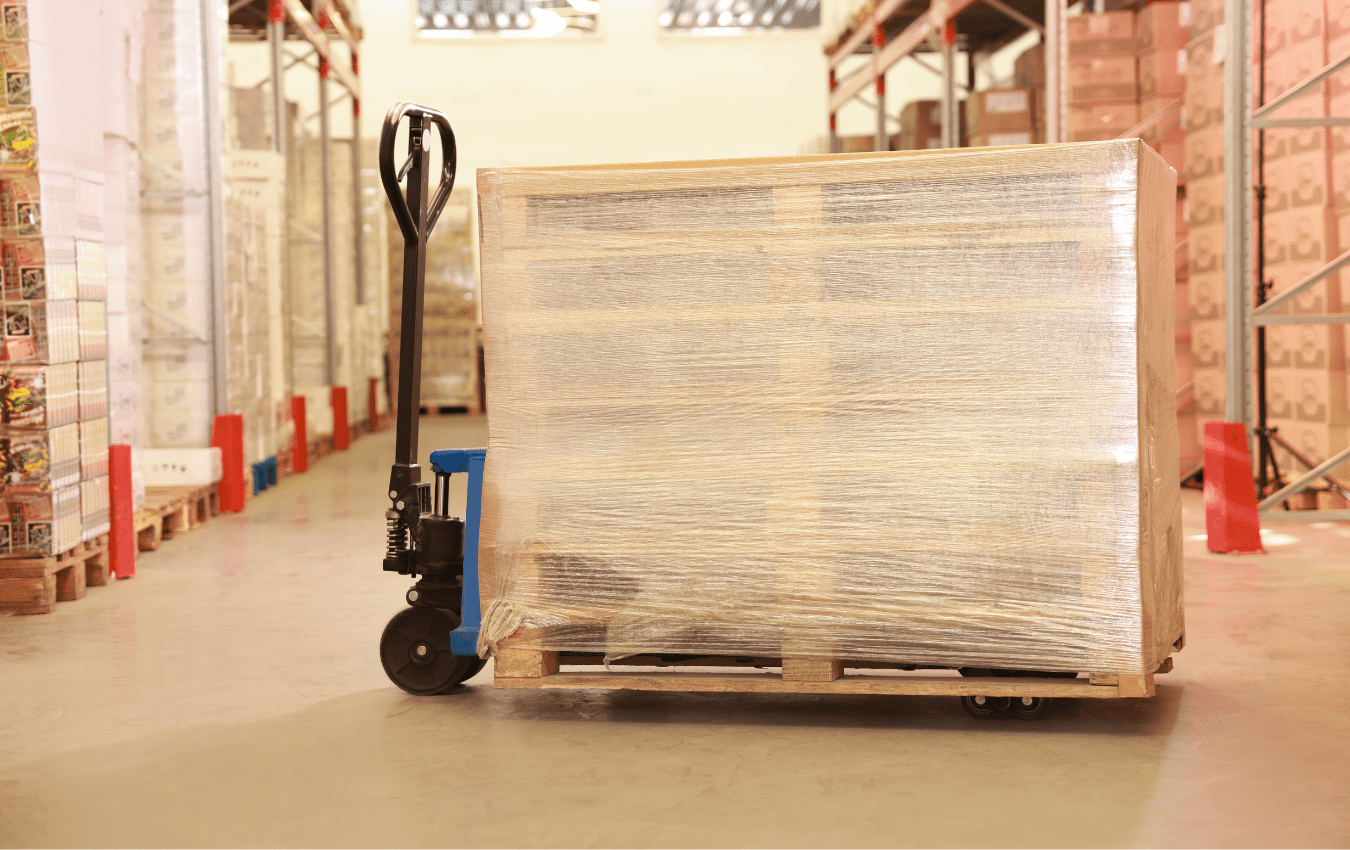
- Toughness and puncture resistance: Blown stretch film is known for its durability and ability to withstand punctures, making it suitable for packaging sharp-edged or irregularly shaped items.
- Enhanced cling: Blown film has excellent cling properties, allowing it to tightly wrap around products and provide secure load containment.
- Greater stretchability: Blown stretch film typically offers higher elongation capabilities, enabling better flexibility and adaptability to various load sizes and shapes.
- Irregularly shaped or sharp-edged products: The toughness and puncture resistance of blown stretch film make it ideal for securely packaging items with irregular shapes or sharp corners.
- Heavy-duty and industrial applications: Blown film’s strength and cling properties make it suitable for heavy-duty packaging, such as industrial or construction materials.
- High-security applications: The strong cling of blown film helps prevent tampering and provides additional security for valuable or sensitive goods.
- Superior load retention: Blown stretch film provides excellent load-holding capability, minimizing the risk of load shifting or damage during transportation and storage.
- Resistance to punctures and tears: The toughness of blown film helps protect packaged items from punctures or tears, maintaining the integrity of the load.
- Versatility: Blown stretch film can be used with both manual and automatic packaging equipment, allowing for flexibility in various packaging operations.
Stretch Film Types
The differences between conventional, engineered, and pre-stretched stretch films are significant as they provide distinct properties and benefits suited to specific packaging needs. These variations offer flexibility in terms of load-holding capability, durability, and cost-effectiveness, enabling buyers to select the most suitable stretch film type for their unique requirements.
Conventional
Conventional stretch film is a standard type of stretch film used for securing and stabilizing palletized goods during transportation and storage, offering reliable load-holding capability and general packaging performance.
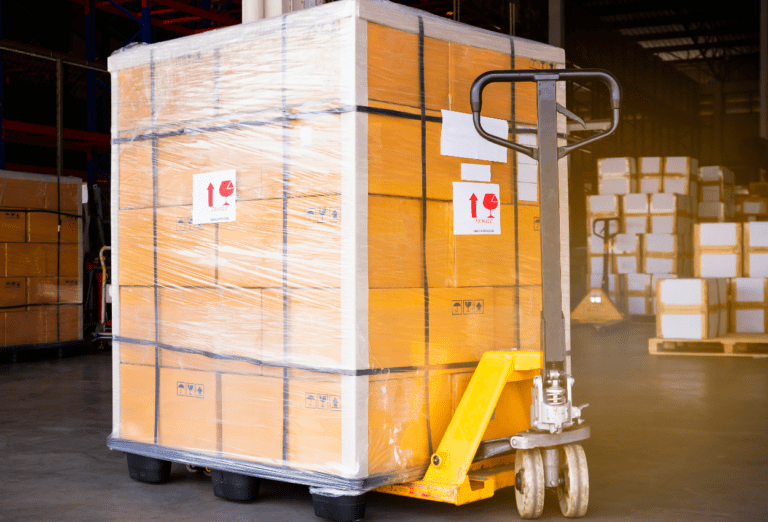
- Load-holding capability: Conventional stretch film provides reliable load-holding capability, securing and stabilizing palletized goods during transportation and storage.
- Flexibility: Conventional stretch film is designed to stretch and conform to different load shapes and sizes.
- Cost-effective: Conventional stretch film offers a cost-effective packaging solution without compromising load integrity.
- Ease of use: It can be applied manually or with automated equipment, providing flexibility in packaging operations.
- Product protection: Conventional stretch film helps protect goods from potential damage caused by shifting or impacts during handling and transit.
- Load-holding capability: Conventional stretch film provides reliable load-holding capability, securing and stabilizing palletized goods during transportation and storage.
- Versatility: It offers a balance between cost-effectiveness and performance, making it suitable for various packaging applications.
- Flexibility: Conventional stretch film is designed to stretch and conform to different load shapes and sizes.
- Cost-effective: Conventional stretch film offers a cost-effective packaging solution without compromising load integrity.
- Ease of use: It can be applied manually or with automated equipment, providing flexibility in packaging operations.
- Product protection: Conventional stretch film helps protect goods from potential damage caused by shifting or impacts during handling and transit.
Engineered
Engineered stretch film is a specialized type of stretch film designed that is multilayer with specific properties providing superior performance and extra strength, while relying on lower thickness and less material, as resin is stronger.
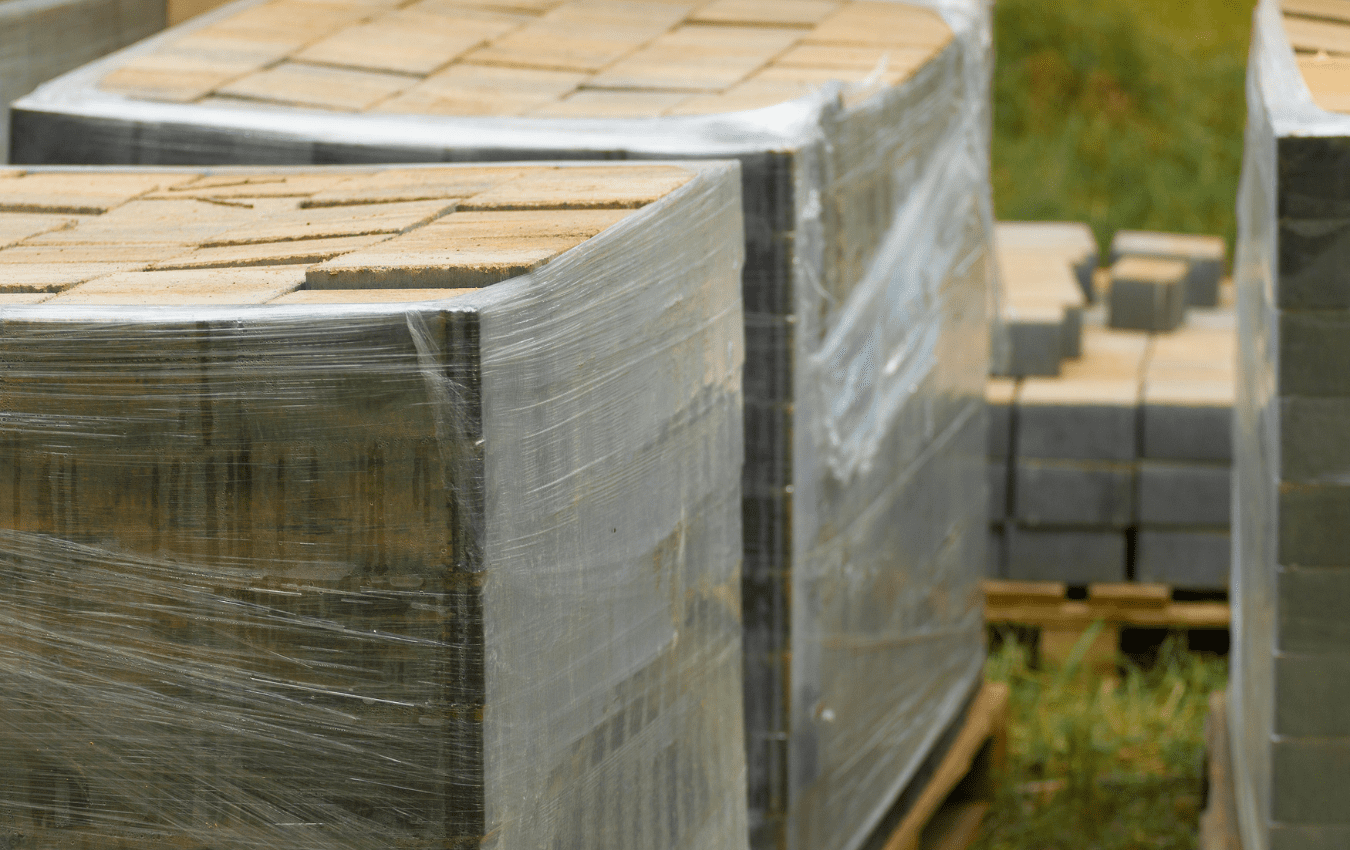
- Enhanced characteristics: Engineered stretch film is designed with multiple layers and stronger resin allowing it to provide superior strength with less material.
- Strength and durability: It provides superior performance and extra strength, offering enhanced protection for demanding packaging applications.
- Tailored properties: Engineered stretch film can be customized to meet specific packaging requirements, ensuring optimal performance.
- Customized solutions: It allows for tailored packaging solutions to meet specific load requirements and challenges.
- Peace of mind: Engineered stretch film provides confidence in protecting valuable or sensitive items during transit or storage.
- Less material usage than conventional films which makes it a more sustainable option.
- Enhanced characteristics: Engineered stretch film is designed with multiple layers and stronger resin allowing it to provide superior strength with less material.
- Strength and durability: It provides superior performance and extra strength, offering enhanced protection for demanding packaging applications.
- Tailored properties: Engineered stretch film can be customized to meet specific packaging requirements, ensuring optimal performance.
- Customized solutions: It allows for tailored packaging solutions to meet specific load requirements and challenges.
- Peace of mind: Engineered stretch film provides confidence in protecting valuable or sensitive items during transit or storage.
- Less material usage than conventional films which makes it a more sustainable option.
Pre-Stretched
Pre-stretched stretch film undergoes a pre-stretching process during manufacturing. This reduces the film’s thickness as it has been stretched, resulting in benefits such as reduced film usage, and increased packaging efficiency.
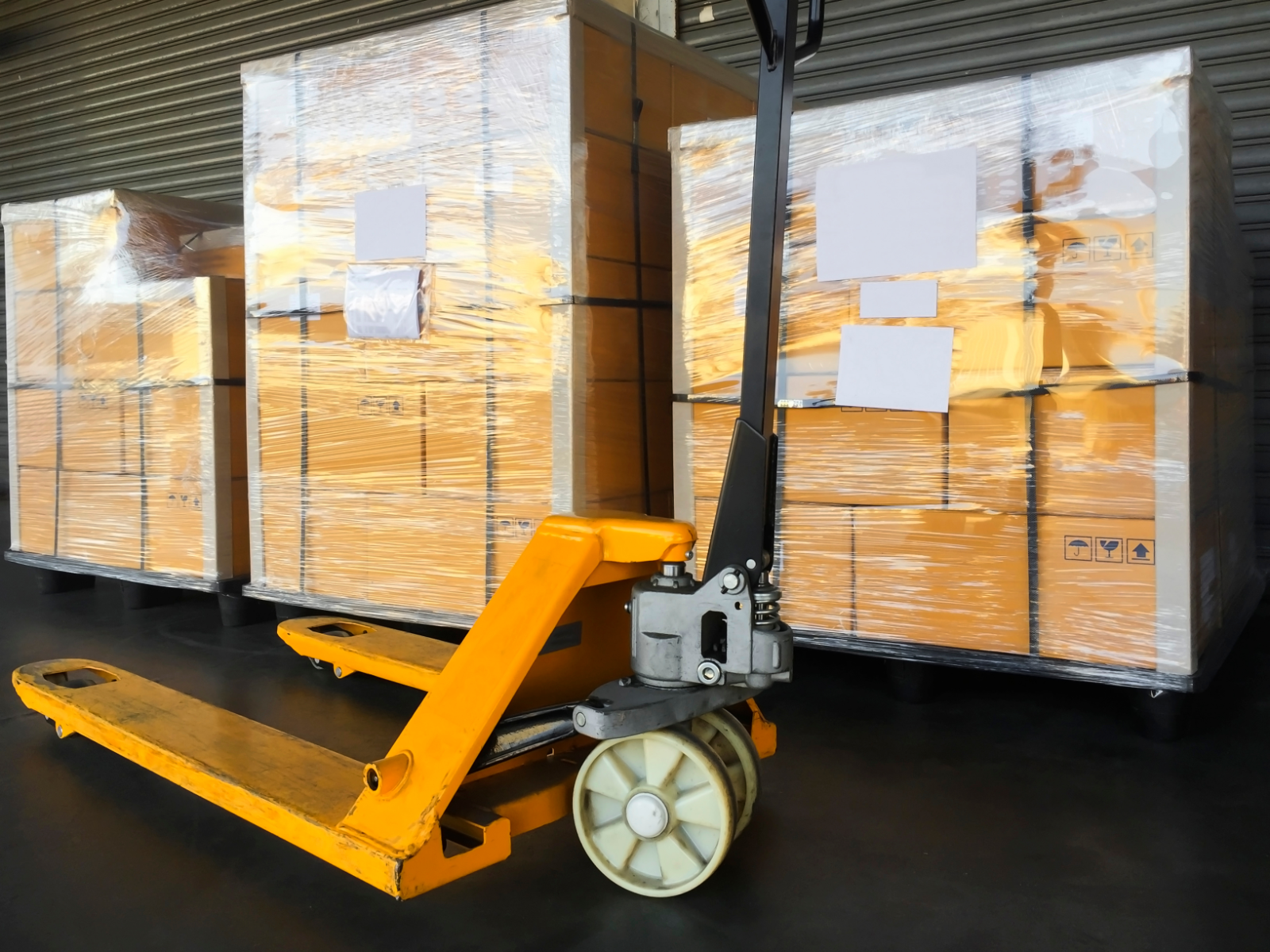
- Reduced thickness: Pre-stretched stretch film is thinner compared to regular stretch film, achieved through a pre-stretching process during manufacturing.
- Material Usage Efficient: The film is stretched out creating a thin layer that can cover more volume than traditional stretch film applied by hand. This film is ideal for lightweight and small applications.
- Cost savings: Pre-stretched stretch film reduces film consumption, leading to cost savings over time.
- Eco-friendly: Pre-stretched stretch film’s reduced material usage contributes to environmental sustainability and waste reduction.
- Reduced thickness: Pre-stretched stretch film is thinner compared to regular stretch film, achieved through a pre-stretching process during manufacturing.
- Material Usage Efficient: The film is stretched out creating a thin layer that can cover more volume than traditional stretch film applied by hand. This film is ideal for lightweight and small applications.
- Cost savings: Pre-stretched stretch film reduces film consumption, leading to cost savings over time.
- Eco-friendly: Pre-stretched stretch film’s reduced material usage contributes to environmental sustainability and waste reduction.
Stretch Film Application Methods
The application method of stretch film, whether by hand or machine, is an important factor to consider when selecting the right film. Hand application offers flexibility and control for smaller operations, while machine application provides efficiency and consistency for high-volume packaging.
Hand Film
Hand stretch film, also known as manual stretch film, is specifically designed for manual application by hand. It typically comes in smaller roll sizes that are lightweight and easy to handle. Hand stretch film provides convenience and versatility for smaller packaging operations or when using handheld dispensers, offering protection and stability for various loads.
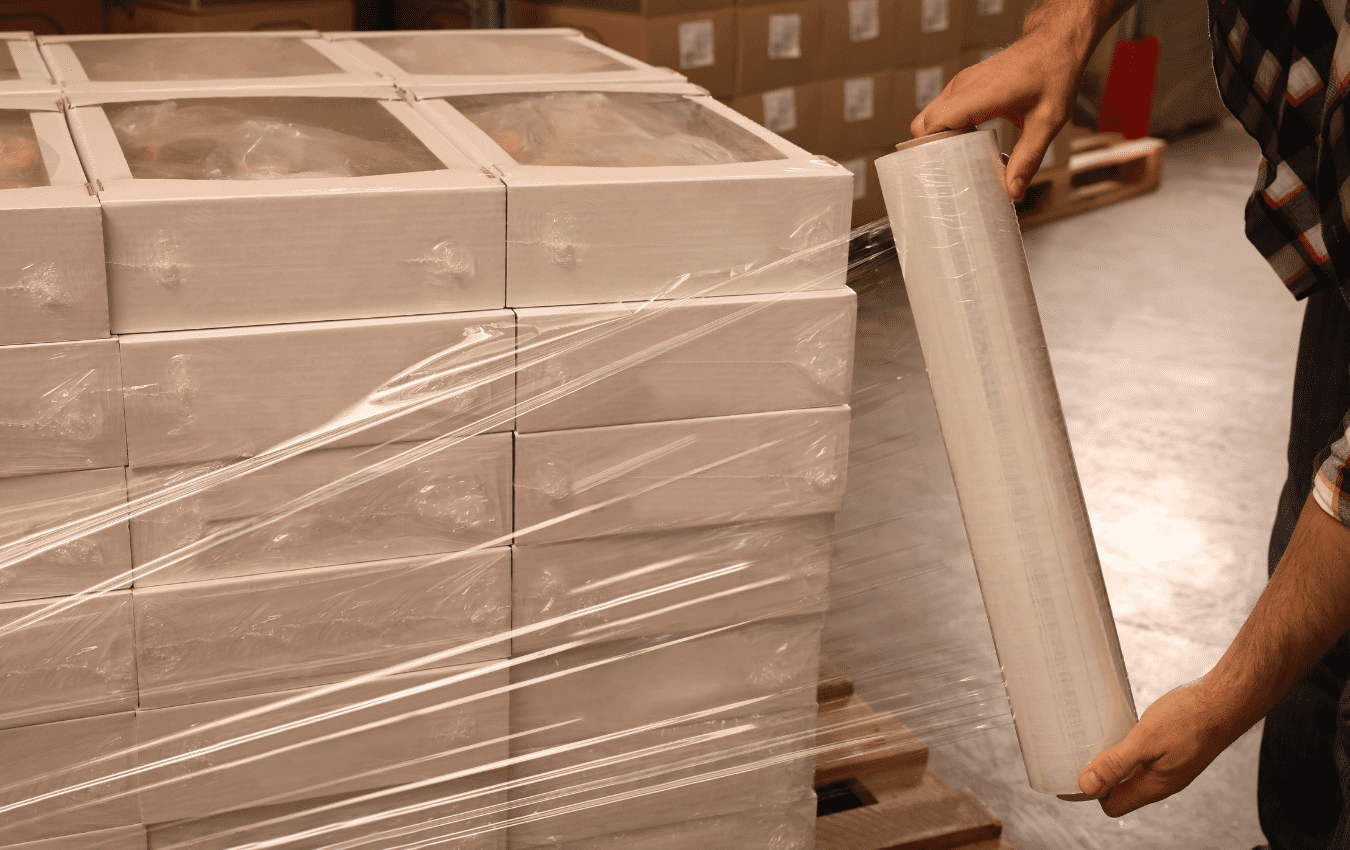
- Lightweight and easy to handle: Hand stretch film is typically available in smaller roll sizes, making it manageable for manual application by hand.
- Stretchability: It offers a level of stretch that allows for secure wrapping around various load sizes and shapes.
- Clarity and visibility: Hand stretch film often provides excellent clarity, allowing for easy identification of packaged products.
- Small-scale packaging: Hand stretch film is commonly used for wrapping and securing smaller loads or individual items in retail, e-commerce, or home-based businesses.
- Manual operations: It is ideal for packaging applications where manual application by hand is preferred or when using handheld dispensers.
- Versatile use: Hand stretch film finds applications in industries such as logistics, moving and storage, and general warehousing.
- Cost-flexible: Hand stretch film is often more affordable when you consider start up costs and flexibility in purchasing roll quantities (Machines rolls are usually sold in pallets).
- Convenience: It provides flexibility and convenience for on-demand packaging needs and quick wrapping requirements.
- Protection and stability: Hand stretch film helps protect goods from dust, moisture, and tampering, while providing stability during transportation and storage.
Machine Film
Machine stretch film is designed for use with automated stretch wrapping machines. It comes in larger roll sizes and is optimized for high-volume packaging operations. Machine stretch film offers consistent application, speed, and efficiency, making it ideal for large-scale or industrial packaging applications where productivity and load containment are crucial.
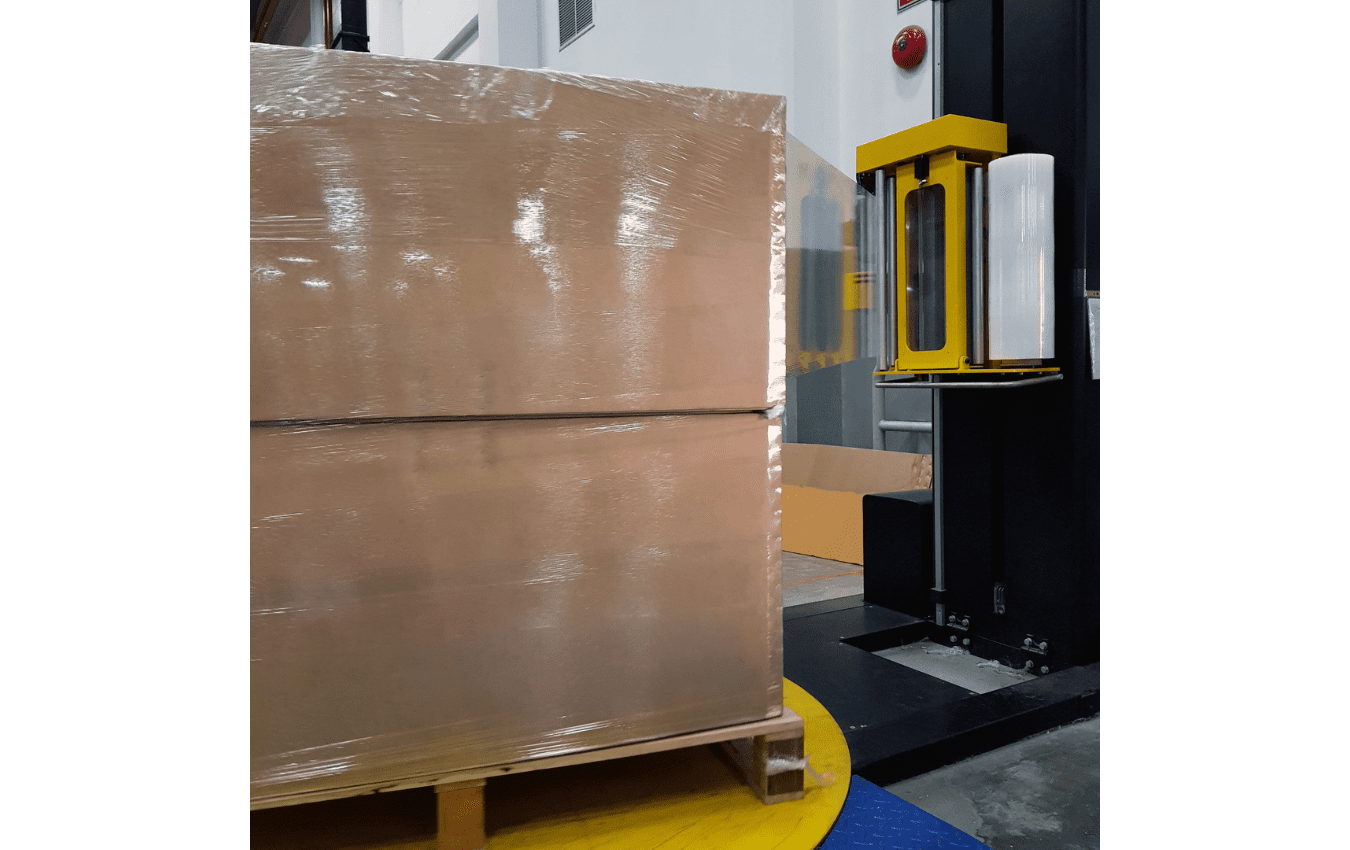
- Designed for automated application: Machine stretch film is specifically designed to be used with stretch wrapping machines, ensuring efficient and consistent application.
- Roll sizes and compatibility: It comes in larger roll sizes that are suitable for high-volume packaging operations and compatible with stretch wrapping machinery.
- Optimal stretch and cling: Machine stretch film is engineered to provide the right balance of stretch and cling for secure load containment.
- Industrial and large-scale packaging: Machine stretch film is commonly used in industries such as manufacturing, distribution centers, logistics, and warehouses that require high-volume packaging operations.
- Automated packaging lines: It is ideal for use with stretch wrapping machines, enabling automated and streamlined packaging processes.
- Palletizing and unitizing: Machine stretch film efficiently secures and stabilizes pallet loads during transportation and storage.
- Increased productivity: Machine stretch film allows for fast and efficient packaging operations, improving productivity and throughput.
- Consistent application: It ensures consistent wrapping tension and load containment, minimizing the risk of load shifting or damage.
- Load stability and protection: Machine stretch film provides superior load stability, protecting goods from moisture, dust, and tampering during transit and storage.
Stretch Film Additives
There are numerous additives that can be incorporated into stretch film formulations to enhance specific properties or address particular packaging requirements.
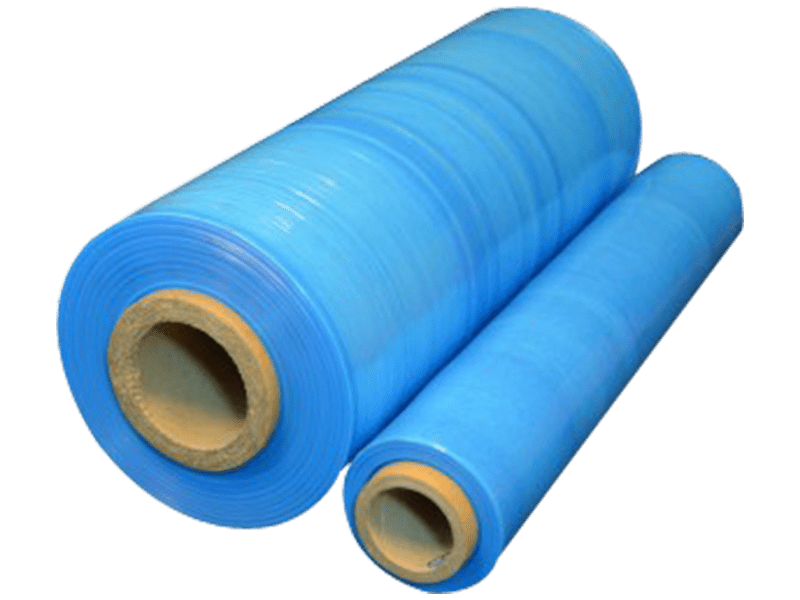
Incorporating a UVI additive helps protect stretch film and the packaged items from the harmful effects of UV radiation. It prevents degradation, discoloration, or loss of physical properties that can occur during outdoor storage or transportation.
A slip agent is added to the film formulation to reduce the coefficient of friction on the film surface. This additive promotes smooth unwinding and prevents film-to-film sticking, ensuring hassle-free application and efficient packaging operations.
Stretch films often contain antiblock agents, which create microscopic bumps on the film surface. These bumps minimize the adhesion between film layers, preventing blocking or sticking during storage or unwinding, and facilitating smooth film separation.
Antistatic agents are incorporated into stretch film to reduce the buildup of static electricity. This additive helps minimize static-related issues such as dust attraction, product clinging, or discharge, ensuring a clean and trouble-free packaging process.
Fragrance additives infuse stretch film with pleasant scents. This can be desirable for products such as perfumes, candles, or air fresheners, adding a pleasant olfactory experience to the packaging.
Volatile corrosion inhibitors are additives that release vapor to protect metal components within the packaged items from rust or corrosion. They create a protective barrier, preserving the integrity and longevity of metal products during storage or transportation.
Stretch films can be enhanced with colorants to provide visual identification, branding, or differentiation of packaged goods. Colorants can be used to identify specific products, facilitate sorting, or enhance visual appeal.
A tackifier additive is used to improve the cling properties of stretch film. It enhances the adhesion of the film to the load, ensuring secure containment and preventing the film from slipping or unraveling during transportation or storage.
Antifog agents are incorporated into stretch film to prevent the formation of condensation or fog on the film surface. This additive ensures optimal visibility and clarity of packaged products, particularly in applications where temperature changes or humidity variations can cause fogging.
Stretch films can contain oxygen scavengers that absorb oxygen within the packaging environment. This additive helps reduce the presence of oxygen, minimizing the chances of spoilage, oxidation, or degradation of oxygen-sensitive products.
Anti-fade agents are used in stretch film to protect the film and packaged items from fading due to exposure to sunlight or other light sources. This additive helps maintain the visual appearance and color stability of packaged
